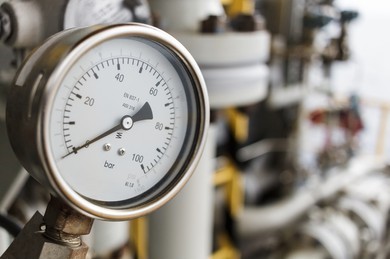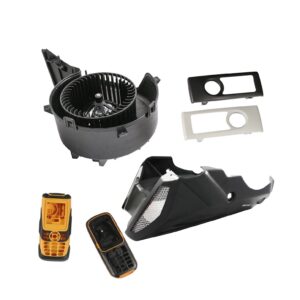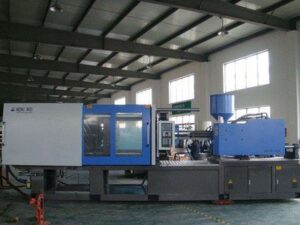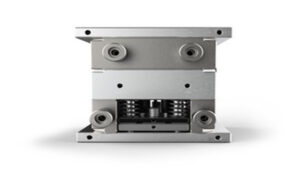Pressure gauges are essential tools used in a wide range of industries to measure and monitor fluid and gas pressure. When it comes to manufacturing pressure gauges, choosing the right materials for the internal components is critical to ensure accuracy, durability, and reliability. While there are several materials available for manufacturing internal gauge components, plastic has emerged as the top choice for many manufacturers. In this article, we will break down the benefits of using plastic parts in pressure gauge manufacturing, from its versatility and cost-effectiveness to its resistance to corrosion and ease of customization. We’ll also explore the different types of plastic materials commonly used in pressure gauge manufacturing and how they compare to other materials. So, if you’re interested in learning why plastic parts reign supreme in pressure gauge manufacturing, read on!
Types of materials used in pressure gauge manufacturing
Pressure gauges consist of two primary components: the gauge head and the bourdon tube. The gauge head houses the internal mechanism that translates pressure into a readable output, and the bourdon tube is the element that responds to pressure changes. When it comes to choosing materials for these components, manufacturers have several choices, including metal, plastic, and glass.
Metal was the traditional material of choice for pressure gauge manufacturing. However, the rise of plastic technology has led to plastic becoming the preferred material for many manufacturers. Plastic offers several advantages over metal, including cost-effectiveness, versatility, and ease of customization. Plastic is also lightweight, which can be essential in certain applications where weight is a concern.
Benefits of using plastic parts in pressure gauge manufacturing
One of the primary benefits of using plastic parts in pressure gauge manufacturing is cost-effectiveness. Plastic is less expensive than metal, making it an attractive option for manufacturers looking to reduce costs without sacrificing quality. Plastic parts are also easier to manufacture, which translates to lower labor costs.
Plastic is also versatile, allowing manufacturers to create components in a wide range of shapes and sizes. This versatility is particularly useful in applications where space is limited or where customized components are required. Plastic parts can be molded into complex shapes, which is not possible with metal.
Another significant benefit of plastic parts is their resistance to corrosion. Unlike metal, plastic is not susceptible to rust or corrosion, making it ideal for use in harsh environments. Plastic components are also not affected by exposure to moisture, which can cause metal parts to corrode over time.
Plastic materials commonly used in pressure gauge manufacturing
There are several types of plastic materials that are commonly used in pressure gauge manufacturing. These include:
Polypropylene (PP)
Polypropylene is a thermoplastic polymer that is commonly used in pressure gauge manufacturing. It is durable, lightweight, and has excellent resistance to chemicals and heat. Polypropylene is also easy to mold into complex shapes, making it a popular choice for customized components.
Acrylonitrile Butadiene Styrene (ABS)
ABS is a thermoplastic polymer that is known for its strength, durability, and resistance to impact. It is also lightweight and easy to mold, making it an ideal choice for pressure gauge components.
Polycarbonate (PC)
Polycarbonate is a thermoplastic polymer that is used in a wide range of applications, including pressure gauge manufacturing. It is known for its high impact resistance, durability, and clarity. Polycarbonate is also resistant to heat and chemicals, making it an ideal choice for harsh environments.
Polyoxymethylene (POM)
POM is a thermoplastic polymer that is known for its stiffness, strength, and durability. It is also resistant to chemicals and heat, making it an ideal choice for pressure gauge components.
Comparison of plastic parts to metal parts in pressure gauge manufacturing
While metal was the traditional material of choice for pressure gauge manufacturing, plastic has several advantages over metal. Plastic is less expensive, easier to manufacture, and more versatile than metal. Plastic is also lightweight, which can be essential in applications where weight is a concern.
Another significant advantage of plastic parts is their resistance to corrosion. Unlike metal, plastic does not rust or corrode, making it ideal for use in harsh environments. Plastic components are also not affected by exposure to moisture, which can cause metal parts to corrode over time.
However, metal does have some advantages over plastic. Metal is stronger and more durable than plastic, making it ideal for applications where strength is a concern. Metal parts are also more heat-resistant than plastic parts, which can be essential in high-temperature applications.
Real-life examples of plastic parts in pressure gauge manufacturing
Plastic parts are used in a wide range of pressure gauge applications. For example, plastic bourdon tubes are commonly used in pressure gauges for low-pressure applications. Plastic gauge heads are also used in applications where weight is a concern, such as aviation and aerospace.
Plastic parts are also used in pressure gauges that are designed for use in harsh environments. For example, plastic components are used in pressure gauges for marine applications, where exposure to saltwater can cause metal parts to corrode over time.
Cost comparison of plastic parts vs metal parts in pressure gauge manufacturing
One of the primary advantages of using plastic parts in pressure gauge manufacturing is cost-effectiveness. Plastic is less expensive than metal, making it an attractive option for manufacturers looking to reduce costs without sacrificing quality. Plastic parts are also easier to manufacture, which translates to lower labor costs.
The cost of plastic parts varies depending on the type of plastic used and the complexity of the component. However, in general, plastic parts are significantly less expensive than metal parts.
Environmental impact of plastic parts in pressure gauge manufacturing
Plastic parts have a lower environmental impact than metal parts. Plastic is lightweight, which means that it requires less energy to transport than metal. Plastic is also recyclable, making it an environmentally friendly choice for pressure gauge manufacturing.
However, plastic does have some environmental drawbacks. Plastic is not biodegradable, which means that it can take hundreds of years to decompose. Plastic also requires the use of fossil fuels in its production, which contributes to greenhouse gas emissions.
Conclusion
In conclusion, plastic parts have several advantages over metal parts in pressure gauge manufacturing. Plastic is less expensive, easier to manufacture, and more versatile than metal. Plastic is also resistant to corrosion, making it ideal for use in harsh environments. Plastic parts are used in a wide range of pressure gauge applications, including low-pressure gauges and gauges designed for use in harsh environments.
However, metal does have some advantages over plastic, including increased strength and durability. Metal is also more heat-resistant than plastic, which can be essential in high-temperature applications.
Ultimately, the choice between plastic and metal parts in pressure gauge manufacturing depends on the specific application and the manufacturer’s priorities. However, for many manufacturers, plastic parts have emerged as the top choice due to their cost-effectiveness, versatility, and resistance to corrosion.






